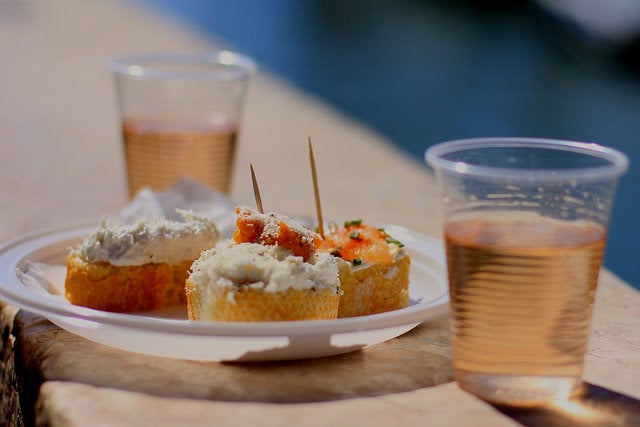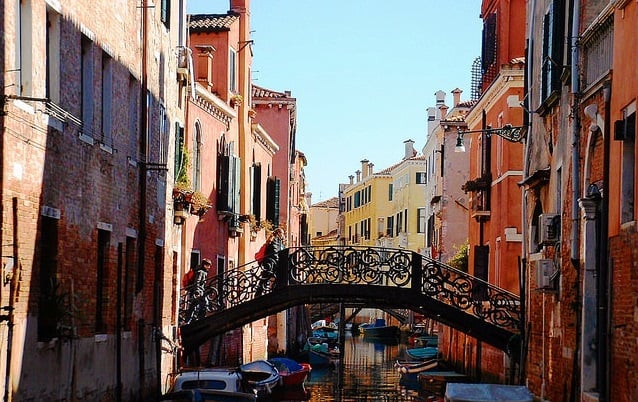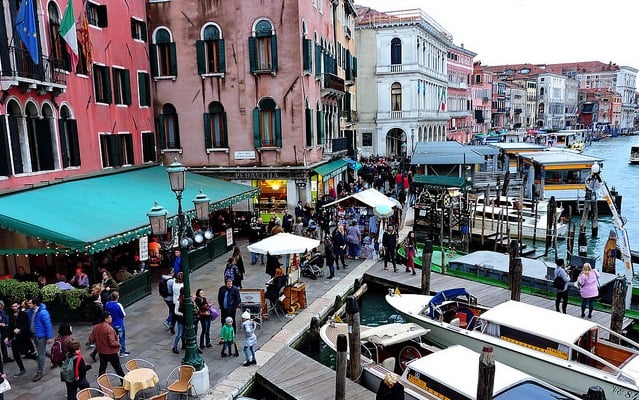As tourists flock to the city over the summer months, some may be worried about reports of unscrupulous restaurants taking advantage of visitors and overcharging them.
But despite its reputation as a pricey destination, a visit to Venice doesn't have to leave a bitter taste in the mouth.
- Nine useful Venetian dialect words to use on your next trip to Venice
- 'Tourism is killing Venice but it's also the only key to survival'
- Ripped off: Italy's worst tourist scams and how to avoid them
And holidaymakers shouldn't be deterred by the measures recently introduced by city authorities to tackle overcrowding and excessive tourism. If you're respectful to locals, and if you take the time to seek out locally-run restaurants, you're likely to have a more enjoyable and memorable visit.
With the help of two Venice food experts, The Local has put together a list of 12 tried and tested local spots to eat and drink.
There are also some general tips and tricks that will help you avoid an overpriced and underwhelming meal. Seeking out supermarkets or pizza al taglio (by the slice, sold to take away) is an easy way to save money, and if you want a sit-down meal, the further away from St Mark's Square and other sites you go, the cheaper things will generally be, though there are still some good finds tucked away in the centre. Huge signs, logos, and waiters beckoning you in from the street are all warning signs — the best places know they can rely on their good food and reputation alone.
One Venice-specific tip, suggested by several The Local readers, is to look for a 'bacaro' (tavern). These neighbourhood pubs offer simple fare, usually with handwritten menus or none at all, and typically lacking in garish signage. There, you can gorge on 'cicchetti', Venetian tapas-style finger food.

Cicchetti by the water in a Venetian tavern. Photo: Michele Simoncini/Flickr
On the other hand, pictures of food or translations of dishes into multiple languages, while helpful, is a sign the restaurant is catering for tourists rather than foodies. It's much more valuable to brush up on your food vocabulary beforehand, or politely ask the waiter for help. Better yet, simply ask them for their recommendations — but make sure you know the price beforehand.
Finally, always be on the lookout for sneaky added charges, whether it's the 'coperto' (service charge), an extra fee for an outdoor table, or desserts or drinks that are offered by the waiter.
Glesni Williams, who works in visual arts management and has worked at Venice's Peggy Guggenheim Museum and Venice Biennale, recommends:
Enoteca al Volto, Calle Cavalli
With a claim to being the oldest bar in Venice, this cosy spot close to the Rialto Bridge offers both seafood in its restaurants and cicchetti at the bar. Either can be paired with a wide selection of wine or beer. Look up to see the ceiling, decorated in hundreds of beer mats.
La Perla ai Bisatei, Campo S. Bernardo, 6
If your trip to Venice includes an excursion to Murano, add this charming osteria to the list to get a glimpse into daily life on the island. It's often full at peak times, but the owners are friendly and efficient and will do their best to seat you as quickly as possible.
Osteria Al Squero, Dorsoduro
Open all day, head there for a quiet coffee and pastry in the morning or return later on for the wide range of cicchetti, when it will have transformed into a bustling wine bar. 'Squero' is the Venetian term for 'boatyard', so you'll be able to enjoy a view of the city's gondoliers at work.
Bacarando in Corte dell'Orso, S. Marco
This eatery is just a stone's throw from the Rialto Bridge, but offers drinks and food at very reasonable prices, with plenty of seating including outdoor space in summer, and welcoming staff. Time your visit right and you'll be able to enjoy live music too.
READ ALSO:

Photo: SarahTz/Flickr
Trattoria dalla Marisa, Cannaregio
A tiny trattoria with a local feel; this spot is often crowded and should be avoided by picky eaters as there are usually only a small number of meals on offer, but rest assured that whatever it is will be freshly cooked and taste great. It also boasts lovely views over the water.
Il Paradiso Perduto, Fondamenta Misericordia
With sparkling wine for €1.50 a glass, and two resident cats, what's not to love? Delicious food and a lively atmosphere in a small side street — but in busy periods you should make a reservation.
Valeria Duflot, who co-founded the website Venezia Autentica to promote local businesses, recommends:
This eatery has only been going since 2015 but is already a firm favourite with locals, with cichetti, fresh fish, and homemade bread among its tasty offerings.
A Venetian-run family business serving local food by a quiet canal ticks all the boxes for an authentic Venice experience.
For a quick, cheap and filling lunch, it's hard to beat a slice of freshly made pizza, and this is the top pick from the Venezia Autentica team — one of the founders works close by, and has eaten their pizza for lunch each day for years! You can also get panini and beer or wine to wash down your meal.
If you're in town for carnival season or any other kind of celebration, you might feel the need for a late-night snack at some point. Forget the greasy kebab and head here for tramezzini, or Venetian sandwiches, right in front of the water bus stop for the Rialto Bridge. And it's not just an after-dark haunt; you can tuck into the tramezzini, pastries, or croissants during the day as well.
The friendly staff at this spot create panini, foccacce, pizzas, and more using high quality Itailan meats, cheeses, and vegetables. You can also pair them with one of the artisanal beers on offer.
And one recommendation from The Local:
Bacaro del Gelato, Fondamenta Misericordia
The Cannaregio district is just as beautiful as the more tourist-saturated areas, and much more peaceful. As a bonus, you can find this gelateria, where the ice creams are bigger and cheaper than those on offer in most of the city's shops — and they taste incredible.
This is an updated version of an article originally published in 2018.
READ ALSO: How to decipher Italy's mind-boggling pasta menus




 Please whitelist us to continue reading.
Please whitelist us to continue reading.
Member comments